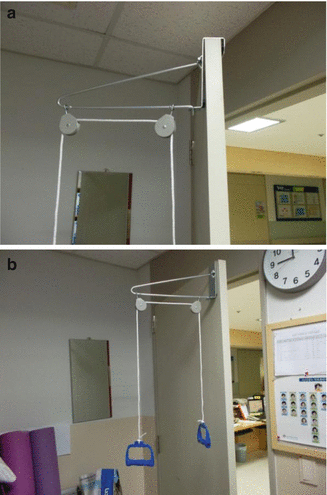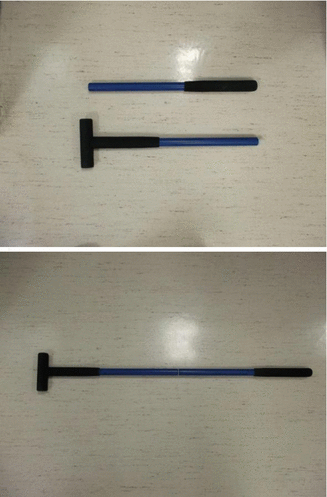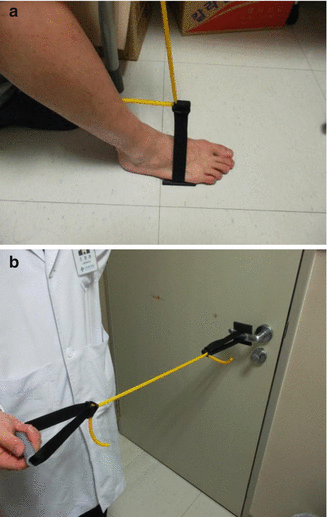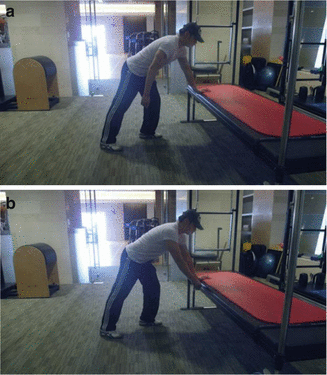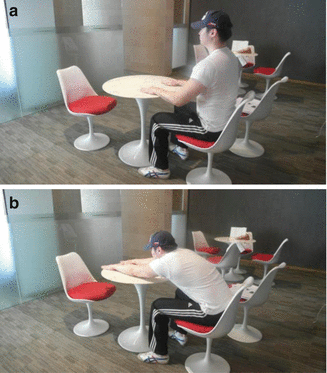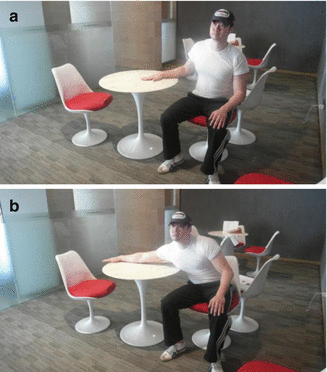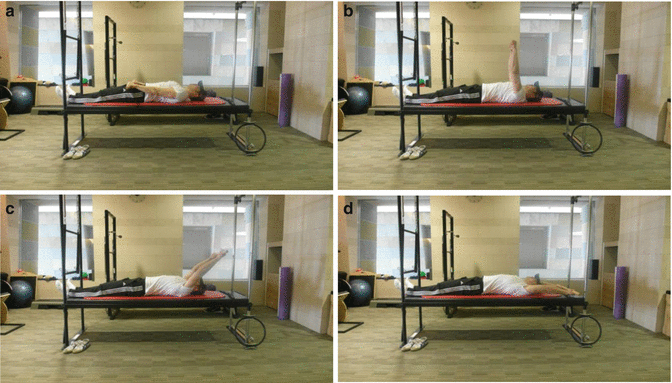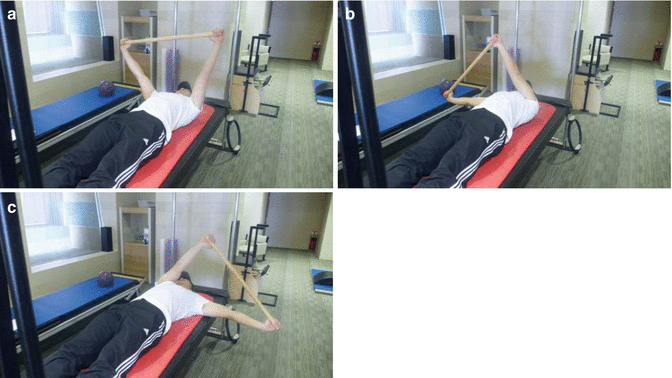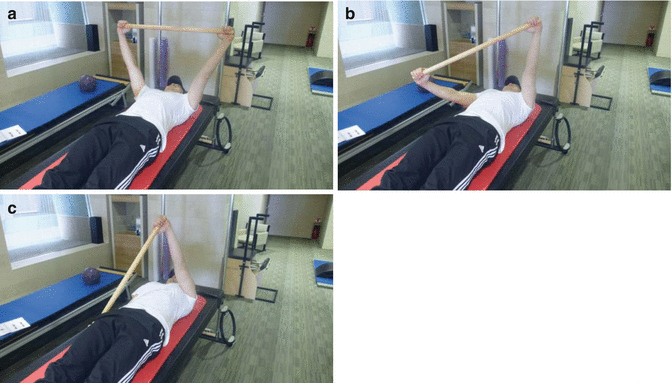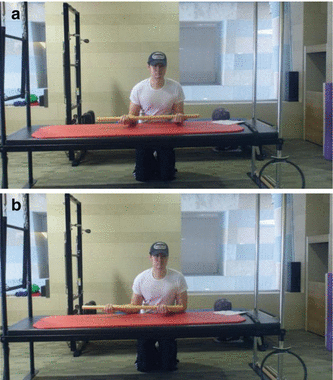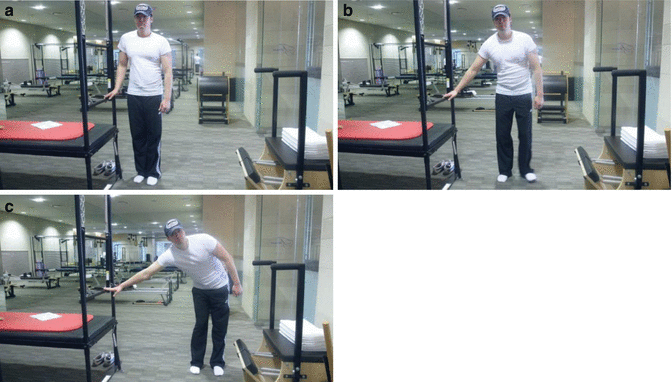
Level 1
<20 % strength

Level 2
21–40 % strength

Level 3
>40 % strength
31.1.3 Equipments for the Exercise
The following equipments will be needed for exercises introduced in this book:
1.
65 cm gym ball, for patients taller than 170 cm
2.
55 cm gym ball, for patients shorter than 170 cm
3.
Rubber bands of three different strengths (for muscle exercise)
4.
Exercise bar
5.
Pulley and strap (cord)
31.1.4 Equipment Installation/Instructions
31.2 Shoulder Exercise Book
31.2.1 Range of Motion Exercise
Exercise for recovery of ROM is made with simple level 1 exercises. Progress after the following:
31.2.1.1 Pendular Exercise
31.2.1.2 Forward Flexion with the Opposite Hand
The palm of the injured extremity should be facing your head (Fig. 31.5a). Using the opposite hand, grab the wrist of the injured extremity and move toward your face (Fig. 31.5c) (120°). Never exert your injured extremity, only make effort on the opposite arm. When returning to the initial position, make sure no effort is done on the injured arm.
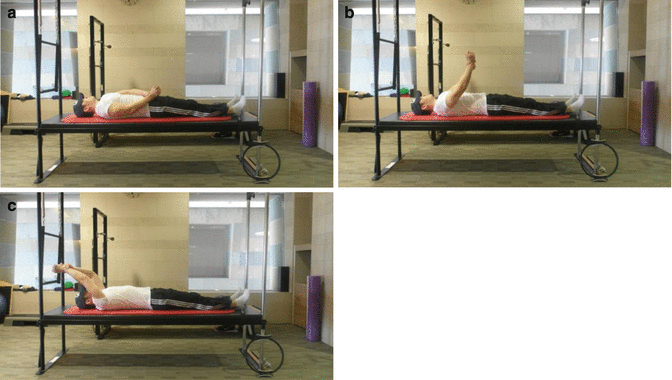

Fig. 31.5
Forward flexion with the opposite hand
31.2.1.3 Pulley Exercise
Prepare the exercise on a sitting position holding the pulley. The palm of the injured extremity should face you (Fig. 31.6a), and always exercise with the opposite arm to lift the injured arm till possible range is achieved (Fig. 31.6c). The injured arm should never be exerted during the exercise. When coming down, the opposite arm should lead the way down.
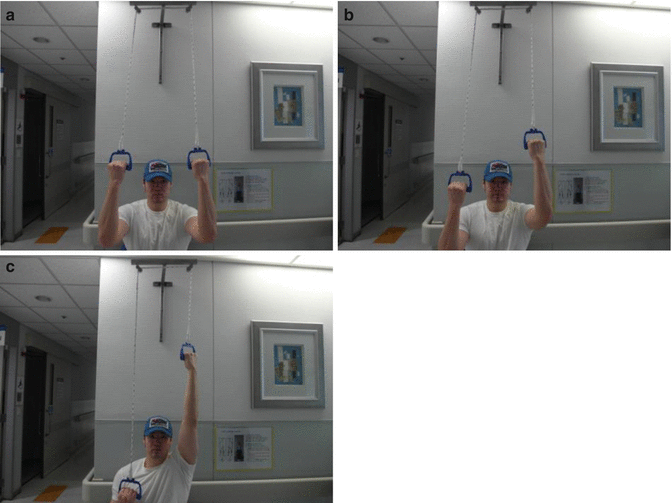

Fig. 31.6
Pulley exercise
31.2.1.4 Flexion on the Table
31.2.1.5 Abduction on the Table
31.2.1.6 Forward Flexion with Exercise Bar
31.2.1.7 Internal and External Rotation: Shoulder in Neutral with Exercise Bar
31.2.1.8 Internal and External Rotation: Shoulder in 90° with Exercise Bar
31.2.1.9 Abduction and Adduction with Exercise Bar
31.2.1.10 Diagonal Side to Side with Exercise Bar
31.2.1.11 External Rotation on the Table
31.2.1.12 Flexion in Standing
31.2.1.13 Abduction in Standing
31.2.1.14 End-Range External Rotation with Exercise Bar in Lying Position
Prepare by lying down on a bed, holding the exercise bar with your shoulder width. The injured shoulder should be located outside the bed. Using your uninjured extremity, push down the bar to elevate your injured shoulder. Continue till the back of your hand reaches the floor (Fig. 31.17).


Fig. 31.17
End-range external rotation with exercise bar in lying position
31.2.1.15 External Rotation: Stretch with Exercise Bar in Standing Position
31.2.1.16 Internal Rotation: Stretch with Exercise Bar in Standing Position
Hold the exercise bar behind your back (Fig. 31.19a). The injured extremity should be placed at the top, and using your uninjured extremity, push upward maximally (Fig. 31.19b).

